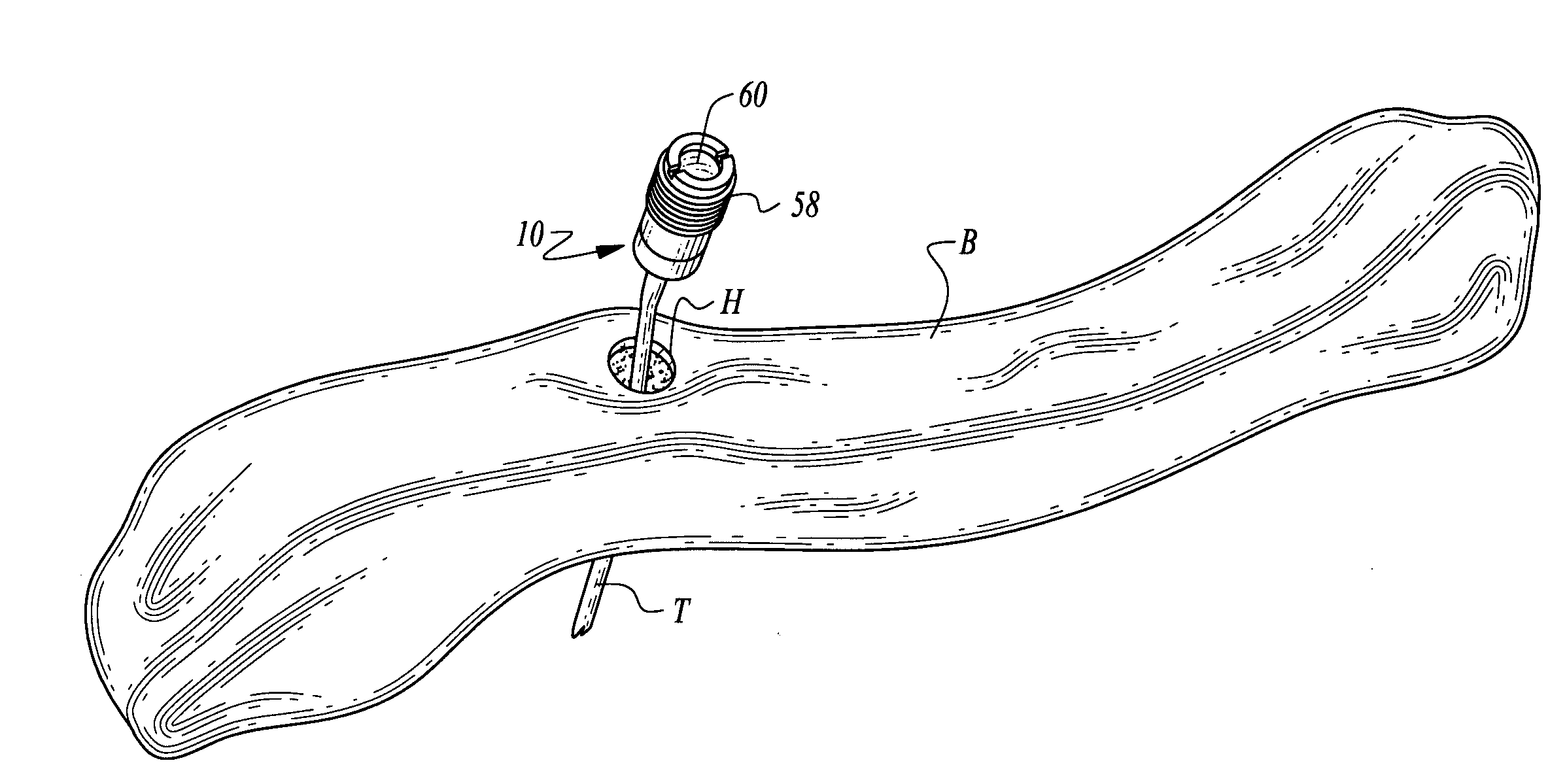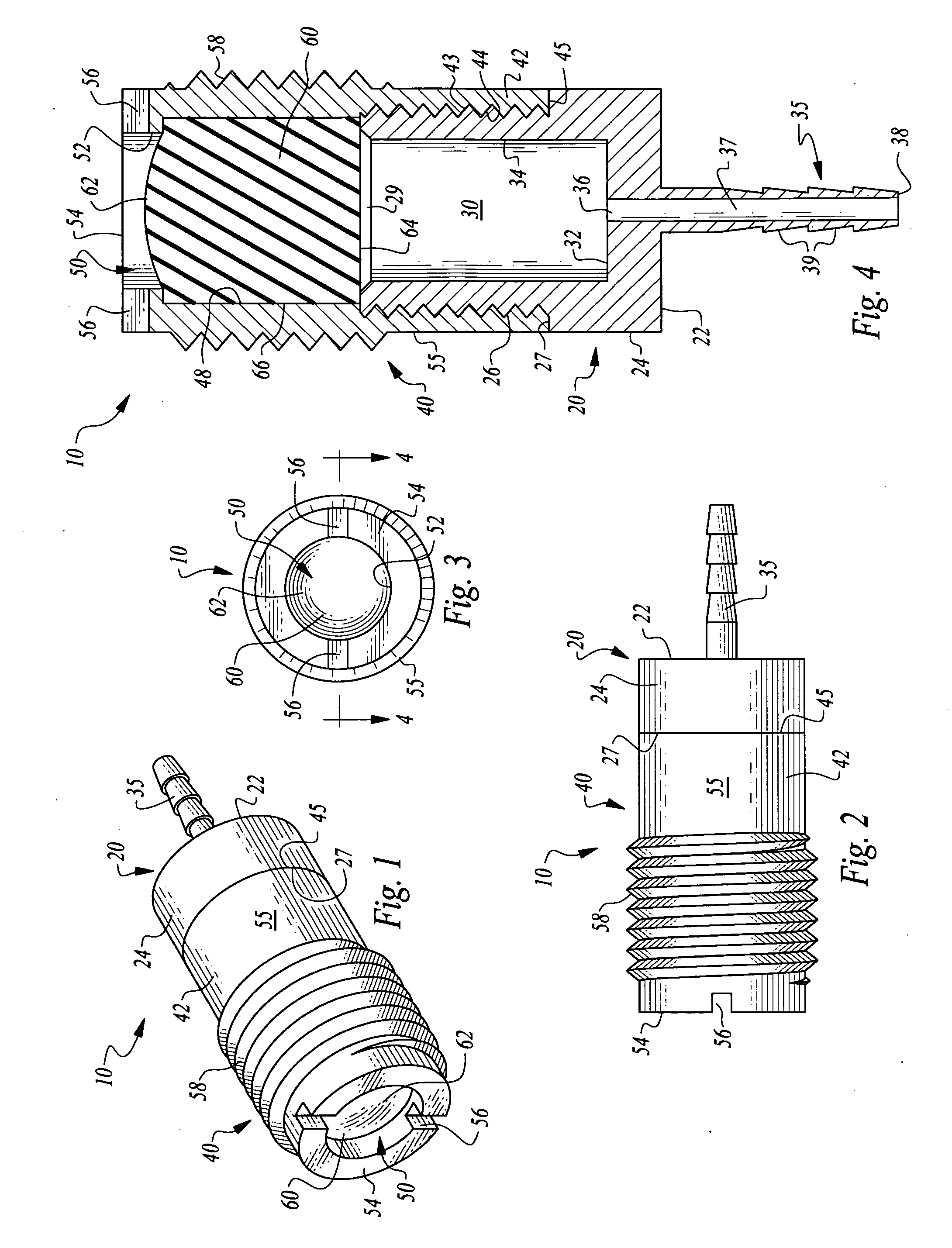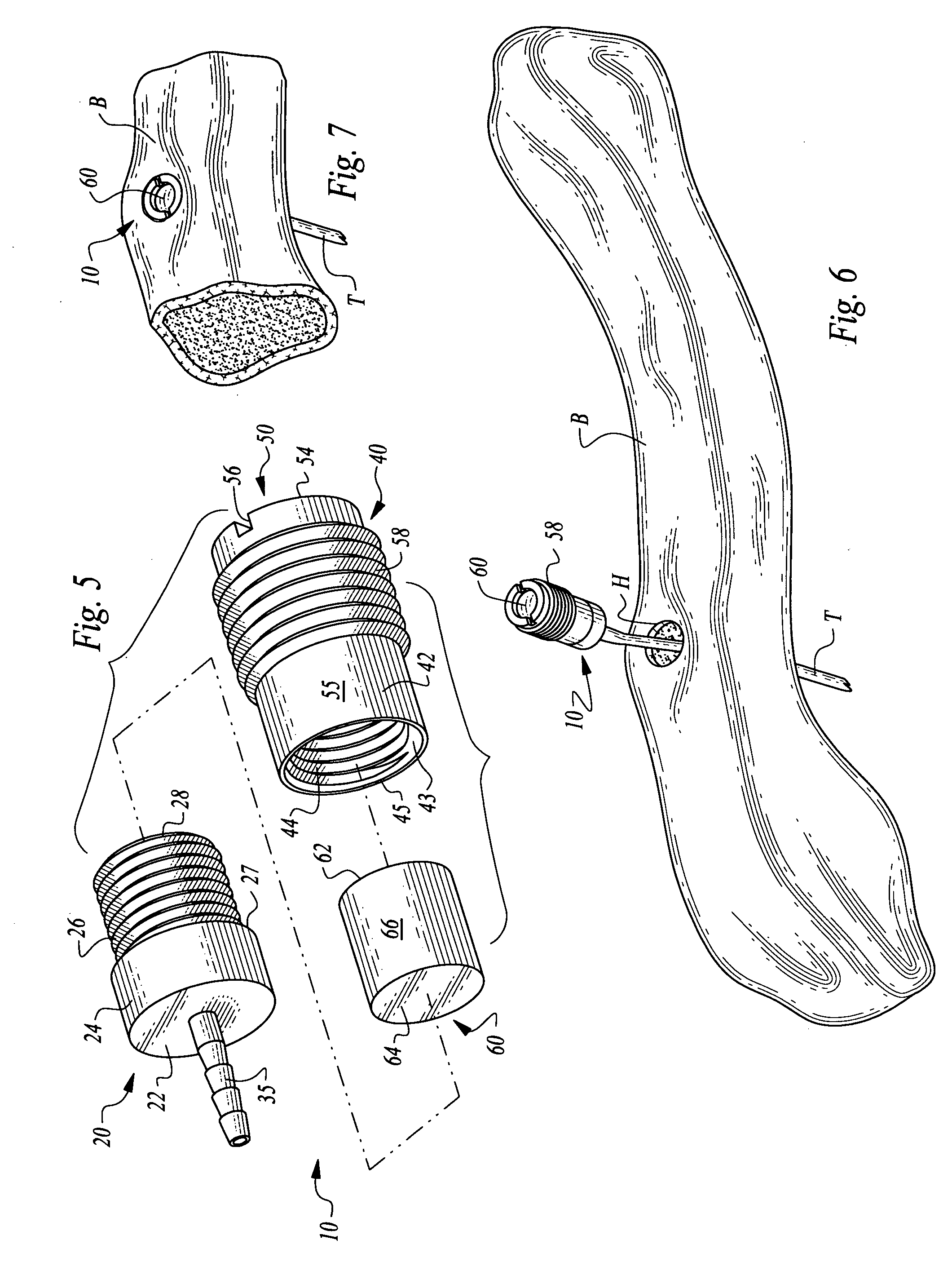Bone supported vascular access port
a vascular access port and bone support technology, applied in the direction of intravenous devices, infusion needles, other medical devices, etc., can solve the problems of port stability within the body after being placed, reducing the propensity to flip, so as to facilitate the removal of the port
- Summary
- Abstract
- Description
- Claims
- Application Information
AI Technical Summary
Benefits of technology
Problems solved by technology
Method used
Image
Examples
Embodiment Construction
[0028]Referring to the drawings, wherein like reference numerals represent like parts throughout the various drawing figures, reference numeral 10 is directed to a bone supported vascular access port (FIGS. 6 and 7). The port 10 is configured with an outer surface 55 (FIG. 1) which can fit within a hole H in a bone B to secure the port 10 in fixed position subcutaneously within the patient. Catheter tubing T is coupled to the port 10 for vascular access between a chamber 30 (FIG. 4) within the port 10, and into the vascular system of the patient. An aperture 50 (FIGS. 1 and 4) provides access to the chamber 30 through a septum 60 which allows a needle to pass therethrough and which can reseal multiple times after needle removal. The port 10 thus provides a securely positioned, easily findable and usable subcutaneous vascular access port which also is substantially invisible to a casual observer of the patient.
[0029]In essence, and with particular reference to FIGS. 1 and 4, basic de...
PUM
 Login to View More
Login to View More Abstract
Description
Claims
Application Information
 Login to View More
Login to View More - R&D
- Intellectual Property
- Life Sciences
- Materials
- Tech Scout
- Unparalleled Data Quality
- Higher Quality Content
- 60% Fewer Hallucinations
Browse by: Latest US Patents, China's latest patents, Technical Efficacy Thesaurus, Application Domain, Technology Topic, Popular Technical Reports.
© 2025 PatSnap. All rights reserved.Legal|Privacy policy|Modern Slavery Act Transparency Statement|Sitemap|About US| Contact US: help@patsnap.com



